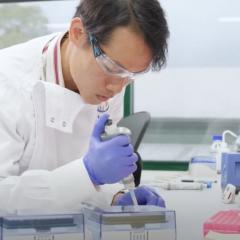Enhanced genetic identification of Neisseria gonorrhoea (NG) strains and associated anti-microbial resistance would help monitor and manage increasing rates of the sexually transmitted disease, a University of Queensland and Queensland Health study has found.
Researchers analysed 3953 NG samples obtained across Queensland from 2010–2015 and categorised them by age range, gender, region, genetic strain and anti-microbial resistance.
Lead author Dr Lisa McHugh, from UQ’s School of Public Health, said South East Queensland (SEQ) and Far North Queensland (FNQ) had the highest proportion of NG in the state.
“Male-dominant networks in SEQ recorded the highest levels of NG with 69 people identified per 100 thousand people,” Dr McHugh said.
There was evidence of strain diversity and antimicrobial resistance with some strains bridging into heterosexual networks.
“Younger women in FNQ also had a higher proportion of NG cases with 54 people identified per 100 thousand people.
“Due to such variability in population, these findings further reinforce the need for individualised care to achieve the most effective treatment and reduce NG transmission.”
Australia’s NG infection rates increased from 10, 329 in 2010 to 29, 549 in 2020 with significant rises in female infections. At the same time, NG strains resistant to the last resort NG drug, ceftriaxone, spread globally.
Senior researcher Dr Ella Trembizki, from the UQ Centre for Clinical Research, said this is a significant public health concern as NG infections can cause serious reproductive and sexual health outcomes, such as pelvic inflammatory disease, infertility and increased risk of HIV transmission.
“This is of particular concern for females because infection can be asymptomatic and therefore undetected, leading to higher morbidity rates and transmission,” Dr Trembizki said.
“Australia’s NG surveillance is among the best in the world, but currently we don't have the capacity to monitor strains comprehensively in remote and regional communities, which results in areas with high rates of NG notifications having sparse resistance data.
“If we had the capacity to consistently genotype a higher proportion of NG samples, which is already collected for STI testing, this would help health authorities monitor and detect NG strains of public health importance that may be circulating undetected or underrepresented in Queensland sexual networks.
“This would enable health authorities to significantly enhance current surveillance efforts, better inform clinicians of anti-microbial resistance trends and potential alternative treatments, and promote awareness among specific communities/populations/locations where increasing infections or resistance rates are emerging.
“Our study also recommends that clinical guidelines be strengthened by extending pharyngeal testing in females to address the recent significant rise in female infections and perhaps account for the bridge between male-dominant and heterosexual networks.”
This research is published in the journal Sexual Health (DOI: 10.1071/SH22118) and is a collaboration between the University of Queensland and Public Health Microbiology laboratory, Queensland Health.



